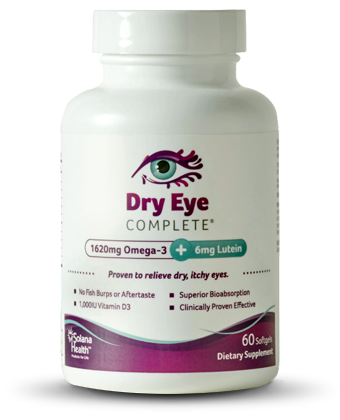Eye industry experts estimate that 25 million Americans are already affected by symptoms of dry eye!
Juggling 2+ digital screens is now the norm as we multitask to get through the work day and our down time!
- Digital Media Consumption Has Never Been Higher
- Face to screen time for US adults has reached an all time high
- From 2010 to 2014 the average daily use of tablets and smartphones went from a little over 1 hour to almost 5 hours
- Between work and play each day, we now spend at least to 3 hours online and 4.5 watching TV
- Face to screen time for US adults has reached an all time high
It’s not just Millennials anymore who are logging mass amounts of digital screen time!
- Digital Connectivity and Internet Use is Skyrocketing
According to a 2015 Pew Research Center report, Americans’ Internet Access: 2000-2015
- Groups we’ve traditionally seen as unconnected are jumping on the digital bandwagon since the turn of the 21st century
- Household Income
We all know it’s important to protect our eyes from the sun’s harmful UV rays—but blue light from digital screens can have eye effects that are just as damaging!
- Blue Light is Overworking Our Eyes
- What is blue light?
- Short, high energy visible (HEV) wavelengths
- Color in the “visible light spectrum” that’s visible to humans
- Where does blue light come from?
- Sun
- Digital screens/electronic devices
- g., TVs, computers, laptops, smart phones, e-readers, and tablets
- Fluorescent and LED lighting
- Are there blue light benefits?
- Regulates our natural sleep and wake cycles
- Helps boost alertness
- Elevates reaction times and moods
- But why is blue light dangerous?
- Flickers more easily than any other visible light
- Creates glare that may reduce visual contrast, affect clarity, and sharpness
- Exposure to blue light at night is especially harmful to our eyes
- Causes digital eyestrain, headaches, physical, and mental fatigue
- What is blue light?
By 2020, it’s estimated that 90% of all of our light sources will contain LED light
- Exposure to Blue Light Can Cause A Full Spectrum of Eye Damage
- Digital Eyestrain Can Start Out as Just an Annoyance
- Computer Vision Syndrome (CVS): Vision-related problems that result from extended use of computers, tablets, e-readers, cell phones, or TVs
- Symptoms
- Blurred vision, light sensitivity, and difficulty focusing
- Headaches/migraines
- Burning/stinging eyes
- Symptoms
- Computer Vision Syndrome (CVS): Vision-related problems that result from extended use of computers, tablets, e-readers, cell phones, or TVs
- Digital Eyestrain Can Start Out as Just an Annoyance
According to a 2015 survey by The Vision Counci l, 65% of American adults reported having symptoms of CVS
- Dry Eye: Chronic condition aggravated by blue light where sufferers’ eyes don’t make enough quality tears to lubricate/nourish the eye
- Symptoms
- Irritated, gritty, scratchy, or burning eyes
- Excess watering and blurred vision
- Symptoms
Eye industry experts estimate that 25 million Americans are already affected by symptoms of dry eye!
- Digital Screens Are Affecting American Kids, Too!
- 66% increase in child nearsightedness since the 1970s and video games are the suspected culprit
- 50% of kids ages 6-18 exceed the 2 hour/day recreational screen time limit
- But 16% spend 4+ hours/day in front of a screen
- Access to a smartphones/tablets at home for kids 8 and under is also rising
- 2011: 52%
- 2013: 75%
- Prolonged Exposure Can Eventually Cause Retinal Damage and Vision Loss
- Age-Related Macular Degeneration (AMD)
- Affects central vision and causes difficulty conducting daily tasks such as driving, reading, and recognizing faces
- Leading cause of vision loss for Americans 50+
- 25% increase in AMD cases in the US from 2000 to 2012
- By 2030, the National Eye Institute forecasts an 80% increase in AMD
No matter your age—limiting exposure to blue light will secure that you have more years of healthy vision!
- What Can You Do to Start Protecting Your Eyes Now from Digital Screens?
- Try the 20-20-20 rule
- Every 20 minutes
- Focus on something 20 feet away
- For 20 seconds
- Reduce Competing Light Sources
- Indoor light should be around 50% as bright as light found in most offices
- Don’t sit in direct sunlight while using digital screens
- Take Vitamin Supplements
- Omega 3/fish oil supplements are clinically proven to improve eye health
- Switch up surroundings to relieve visual fatigue
- Take a break from indoor light and walk outside as often as possible if you’re using digital screens with artificial light
- Remember to blink
- Staring at blue light sources can contribute to dry eye, as people forget to blink
- Get blue light blocking software
- Change the color temperature of your devices to help reduce digital eyestrain and dry eye
- Try the 20-20-20 rule
Learn more about how to protect your eyes from WhatisDryEye.com
- 7 Things Your Eye Doctor Will Want You to Know
- Why LASIK Surgery Can Cause Dry Eyes
- What is Dry Eye Syndrome? + 20 Incredible Facts
- Got Dry Eye?10 Best Preservative-Free Eye Drops
- What are the Causes of Blurred Vision?
- 32 Awesome Benefits of Omega 3 Fish Oils
- How to Choose the Best Warm Compress
- Top 10+ Best Treatments for Dry Eye Syndrome
- Omega 3 Fish Oil Benefits for Dry Eyes


